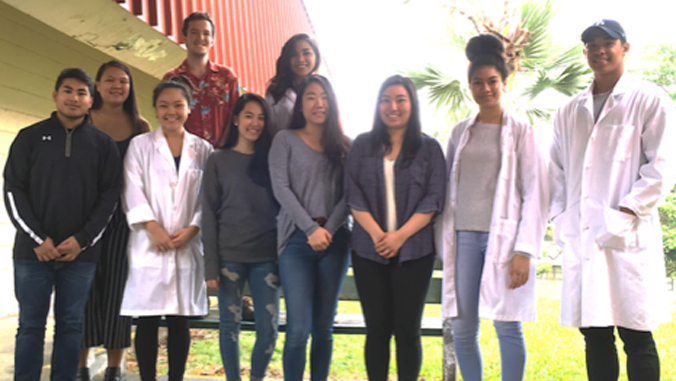
A previously undocumented oyster species has been recognized for the first time in Hawaiʻi by a team of students and faculty at the University of Hawaiʻi at Hilo in a collaborative project with community partners.
The work was done as part of a Course-based Undergraduate Research Experience, commonly called a CURE project, by a genetics class with lab work (BIOL 376L) taught by Jolene Sutton, assistant professor of biology at UH Hilo. CURE projects are large-scale, where an entire class works together to tackle a single research question.
“We brought the oysters into the class and the students did everything from start to finish,” said Sutton. “They did the DNA extraction, amplified a gene that’s typically used for DNA barcoding, did the analysis and then wrote a report on what they found.”

Benefits of the discovery
The genetic study by UH Hilo students expands the known range of the western Pacific Ostrea equestris, a species previously documented in China, Japan and New Zealand, by providing the first verification of its occurrence in Hawaiʻi. The discovery has been submitted to a journal for peer review.
The students’ findings may prove useful for the state’s aquaculture industry.
“This task of identifying the different oysters in Hawaiʻi offers some potential to diversify the markets,” explained Sutton. “This could be something that is marketable for food, since people do eat the Ostrea species. If this is a species that grows really well and is already here, maybe this is a good option for aquaculture purposes.”
Sutton’s co-authors on the paper include students Keinan Agonias, Nicole Antonio, Brandi Bautista, Riley Cabarloc, Maata Fakasieiki, Noreen Aura Mae Gonong, Torey Ramangmou, Lavin Uehara and Jade Wong; two graduate student teaching assistants Jared Nishimoto and Jeremy Schrader; Maria Haws, director of the UH Hilo Pacific Aquaculture and Coastal Resources Center, and colleagues Marni Rem-McGeachy, Hope Helg, Daniel Wilkie and David Littrell; and Rhiannon Chandler, executive director of Waterkeepers Hawaiian Islands.
For more details, view the full story at UH Hilo Stories.
—By Leah Sherwood, a graduate student in the tropical conservation biology and environmental science program at UH Hilo

